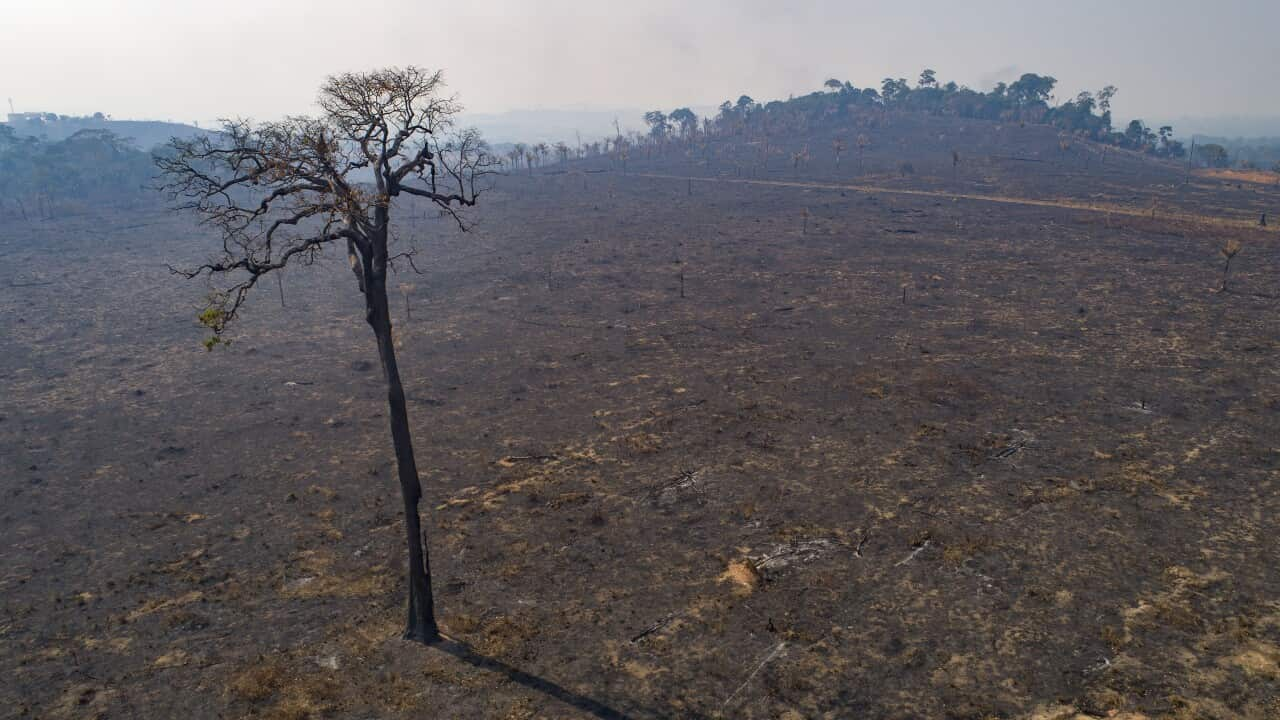Key Points
- The numbers are calculated from an annual satellite monitoring since 1985.
- Brazil, which holds about two-thirds of the Amazon, also leads the destruction.
- The country accounted for 84 per cent of all forest destruction in the period.
The Amazon region has lost 10 per cent of its native vegetation, mostly tropical rainforest, in almost four decades, a report says.
From 1985 to 2021, the deforested area surged from 490,000 square kilometres to 1,250,000 square kilometres, unprecedented destruction in the Amazon, according to the Amazon Network of Georeferenced Socio-Environmental Information, or RAISG.
For comparison, the Northern Territory spans about 1.35 million sq km.
The numbers are calculated from an annual satellite monitoring since 1985 from Bolivia, Peru, Ecuador, Colombia, Brazil, Venezuela, Suriname, Guyana and French Guiana.
The report is a collaboration between RAISG and MapBiomas, a network of Brazilian nonprofits, universities and technology start-ups.
"The losses have been enormous, virtually irreversible and with no expectation of a turnaround," said a statement from RAISG, a consortium of civil society organisations from the region's countries.

The numbers are calculated from an annual satellite monitoring since 1985 from Bolivia, Peru, Ecuador, Colombia, Brazil, Venezuela, Suriname, Guyana and French Guiana. Source: AAP / AP
Brazil, which holds about two-thirds of the Amazon, also leads the destruction. In almost four decades, 19 per cent of its rainforest has been destroyed, due mainly to cattle ranching expansion supported by the opening of roads.
The country accounted for 84 per cent of all forest destruction in the period.
Almost half of Brazil's carbon emissions comes from deforestation.
The destruction is so vast the eastern Amazon has ceased to be a carbon sink, or absorber, for the earth and has become a carbon source, according to a study published in 2021 in the journal Nature.
As of 2021, the Amazon had 74 per cent of its area covered by tropical rainforests and nine per cent of other natural vegetation types.
The region, with 8.5 million square kilometres, has a population of 47 million people, according to RAISG estimates.

Deforestation in the Brazilian Amazon slowed slightly last year, a year after a 15-year high, according to closely watched numbers published on Wednesday, 30 November 2022. Source: AAP / AP
"If all that carbon ended up immediately in the atmosphere, that would be about seven times global annual emissions."











